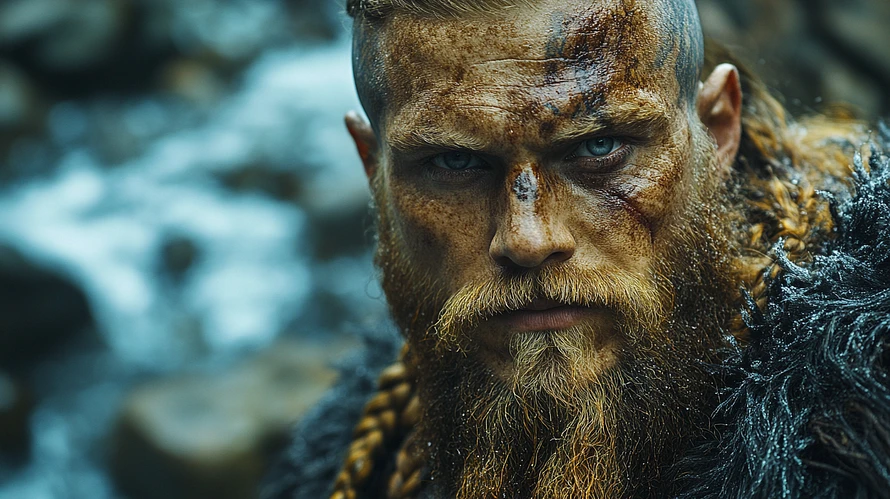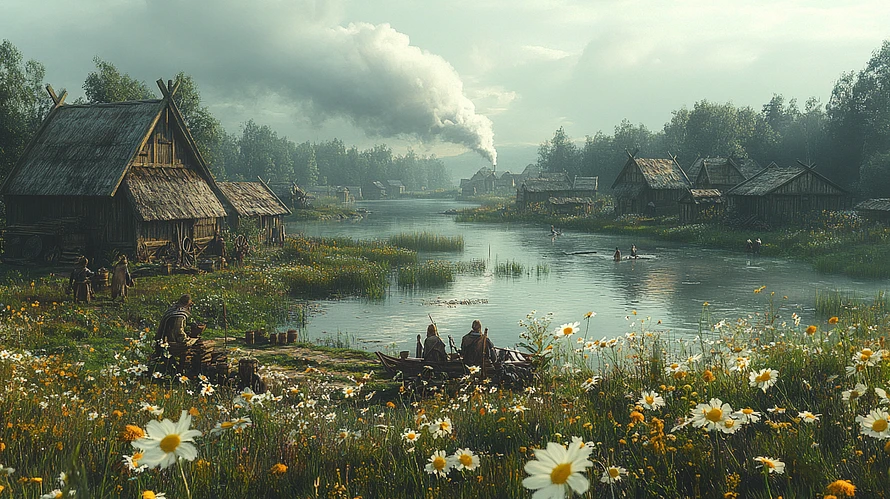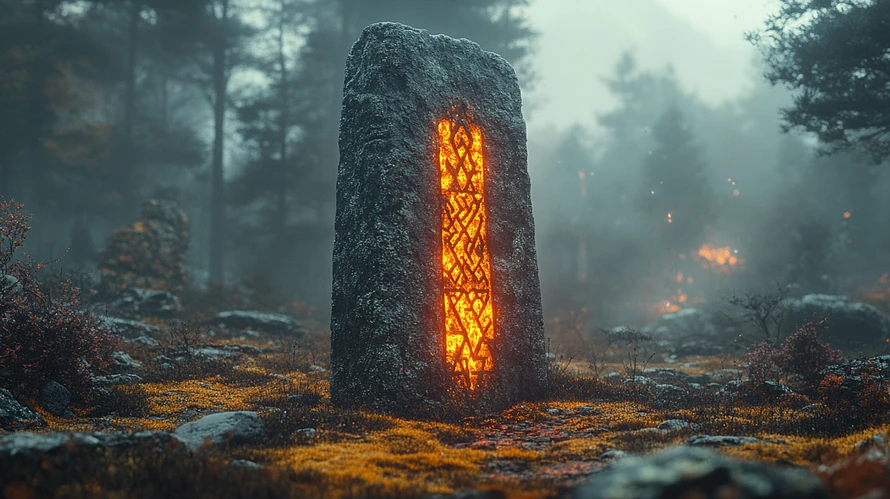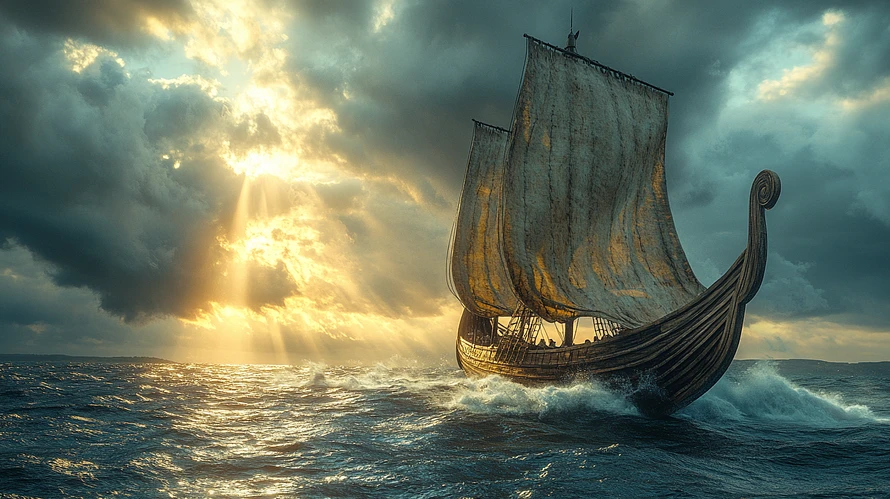Viking Myths and Facts: Debunking Legends and Revealing Truths

Introduction: Why Viking Myths Still Fascinate Us
Vikings have always captured the imagination of people around the world. Whether it’s through epic sagas, blockbuster movies, or video games, the image of these fierce seafarers has become larger than life. But between myth and fact, where does the truth lie? This article explores Viking myths and facts, breaking down the misconceptions while uncovering the fascinating realities of Norse life.
Who Were the Vikings Really?
Origins of the Norsemen
The Vikings were seafaring people from Scandinavia (modern-day Norway, Sweden, and Denmark) who lived between the 8th and 11th centuries. Known for their longships and daring voyages, they explored, traded, and settled across Europe, Asia, and even North America.
Daily Life Beyond Raids and Battles
Contrary to popular belief, most Vikings weren’t warriors. The majority were farmers, craftsmen, and traders. They grew barley, rye, and oats, raised livestock, and made intricate jewelry and tools. Raiding was only one part of their complex society.

Popular Viking Myths and the Truth Behind Them
Myth 1: Vikings Wore Horned Helmets
This is perhaps the most famous misconception. Archaeological evidence shows that Viking helmets were practical and simple—without horns. The horned design was actually popularized by 19th-century opera costumes.
Myth 2: Vikings Were Only Ruthless Warriors
While raids made them infamous, Vikings were also skilled navigators, traders, and settlers. They established trade routes stretching from the Middle East to North America.
Myth 3: Vikings Didn’t Care About Hygiene
Quite the opposite—Vikings were known for their grooming habits. Archaeological finds include combs, tweezers, and ear cleaners. Some sources even suggest they bathed more often than their European neighbors.
Myth 4: Vikings Were Uncivilized Barbarians
Viking societies had laws, democratic assemblies (known as things), and structured communities. They valued honor, family, and craftsmanship.
Myth 5: Vikings Were a Single United Nation
The term "Viking" describes a way of life, not a unified nation. Scandinavia was divided into various tribes and kingdoms with different rulers and customs.

Viking Beliefs and Norse Mythology
Gods, Giants, and the Nine Worlds
The Vikings worshipped gods like Odin, Thor, and Freyja. They believed in Yggdrasil—the World Tree connecting nine realms inhabited by gods, humans, and mystical creatures.
The Role of Runes and Magic
Runes weren’t just letters—they held mystical power. Many Vikings used them for charms, protection, and divination.
The Afterlife: Valhalla and Beyond
Not all warriors went to Valhalla. Some were destined for Hel, a cold and shadowy realm, while others joined Freyja in Folkvangr.
Surprising Facts About the Vikings
Advanced Shipbuilding and Navigation
Viking longships were marvels of engineering, allowing them to travel vast distances. They used the sun, stars, and even crystals (sunstones) for navigation.

Trade, Travel, and Cultural Exchange
Vikings traded furs, amber, and weapons, exchanging goods with Byzantium, the Abbasid Caliphate, and beyond.
Women’s Rights in Viking Society
Women in Viking society had more rights than many of their European counterparts. They could inherit property, divorce, and manage farms.
Viking Influence on Language and Law
Many English words like “sky,” “knife,” and “window” come from Old Norse. Viking legal traditions influenced early European law.
Archaeological Discoveries That Changed What We Know
Burial Sites and Treasures
Grave findings reveal not only weapons but also jewelry, tools, and household goods, showing the richness of Viking culture.
Viking Settlements Across Europe and Beyond
From Greenland to Newfoundland, Viking explorers left their mark. The settlement at L’Anse aux Meadows in Canada proves they reached North America 500 years before Columbus.
How Viking Myths Shaped Modern Culture
Vikings in Movies, Games, and TV Shows
From Marvel’s Thor to the hit series Vikings, Norse culture continues to inspire modern storytelling, even if accuracy sometimes takes a back seat.
The Romanticized Image of Vikings Today
Vikings are often portrayed as noble warriors with horned helmets, a far cry from their true complexity. Still, the myths keep their legend alive.
Frequently Asked Questions
Q1: Did Vikings really discover America?
Yes, evidence from L’Anse aux Meadows in Newfoundland shows Vikings arrived around 1000 CE.
Q2: Were all Vikings warriors?
No, most were farmers, craftsmen, and traders.
Q3: Did Viking women fight in battles?
Some did—historical records and burials suggest shieldmaidens existed.
Q4: Were Vikings taller than average Europeans?
Yes, skeletal remains show they were relatively tall for their time, averaging around 5’7”.
Q5: Did Vikings have written records?
They used runes, but most sagas were passed down orally and written later.
Q6: Why do people think Vikings had horned helmets?
This myth originated from 19th-century romantic art and opera costumes, not historical evidence.
Conclusion: Separating Myth from History
The Vikings were far more than the fierce warriors we often imagine. They were explorers, traders, storytellers, and innovators. By separating Viking myths and facts, we can better appreciate their contributions to history and culture.
👉 If you’d like to dive deeper into Viking history, you can explore resources like National Museum of Denmark.